Life on Earth is mostly green
A new census of life finds that by mass, animals are a small minority
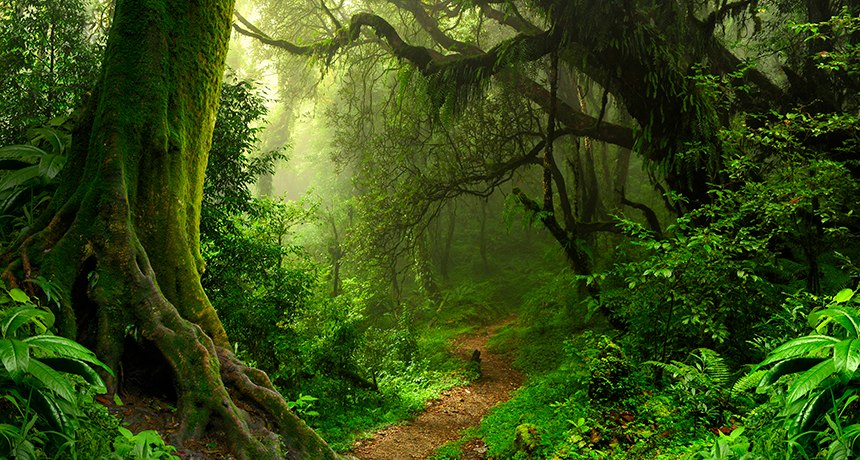
When most people think about life on Earth, they imagine animals. But animals are only a small part of the planet’s life, at least as measured by mass. Overall, green plants dominate.
quickshooting/iStockphoto
If you were writing to an alien pen pal in a distant galaxy, how would you describe life on Earth? Would you describe yourself? Your dog? Maybe birds or fish or snakes? The planet is teeming with diversity, but what would be most representative?
According to a new study, you’d be better off describing something green.
Most of life doesn’t look like me or you — or even Fido. A recent census of all living things found that plants are most common, at least by mass. They weigh in at about 83 percent of the total. So how much do other life forms contribute? And where do humans fit in? The answer is a bit complex. It also depends on how you measure.
Over the years, scientists around the world have conducted surveys of individual species and ecosystems. However, no one had surveyed all of Earth’s life at once, notes Ron Milo. He’s a biologist at the Weizmann Institute of Science in Rehovot, Israel. Milo and his graduate student Yinon Bar-On decided to tackle that first all-inclusive tally.
The total mass of life on Earth is likely around 550 gigatons of carbon, a new study estimates.
It would be impossible to count each tree, mouse and bacterium. Instead, the researchers used math and statistics to make an educated guess about how much life is out there. They started with data from many individual studies in different regions of the world. Then they considered how similar other regions of the world were — places that hadn’t been surveyed in detail. Based on such data, Milo and Bar-On estimated the mass of all life on Earth.
Other researchers have looked at smaller pieces of this puzzle. They’ve also studied how humans fit in. It turns out that humans are definitely in the minority, at least in terms of weight. Yet they are hardly unimportant. Particularly in recent centuries, people have played a major role in changing the balance of other species. And they’ve done it on a planetary scale.
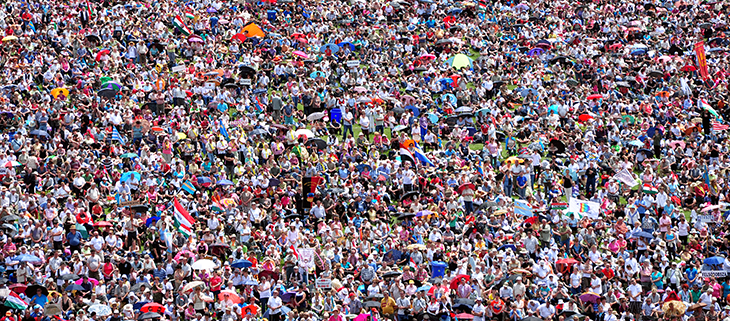
By the numbers
How do you tally all the living things on Earth? You could try to count individuals. Or you could count the number of species that exist. But Milo and Bar-On chose to focus on Earth’s total living biomass.
Biomass is essentially the weight of organisms. Because carbon is a key ingredient in the molecules that make up living things, biomass often is measured in terms of that carbon. When you’re talking about a lot of organisms at once, their biomass may add up to gigatons of carbon. One gigaton is equivalent to the weight of about 73.5 million loaded school buses.
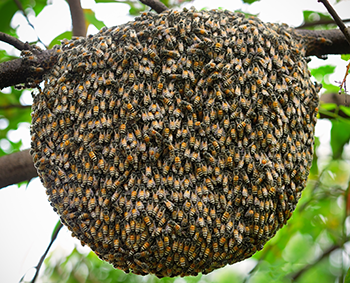
Thinking about biomass can be especially useful when comparing species of different sizes. After all, one tree might have a bigger impact on the local environment than 1,000 bugs living in its branches.
The new study estimates that the total mass of life on Earth is around 550 gigatons of carbon. Milo and Bar-On described how they came to this total last June 19 in the Proceedings of the National Academy of Sciences.
Looking at previous studies by other researchers, Milo and Bar-On identified certain patterns. There were mathematical relationships between the biomass in an ecosystem and such factors as temperature, moisture and climate. Using those patterns, the researchers could estimate biomass in places that no one had studied.
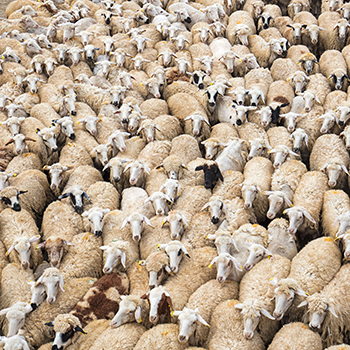
They found that mammals make up only 0.167 gigaton of the total. That’s roughly one-twelfth the mass of all animals. Livestock — mostly cows and pigs — are the majority of that. Wild mammals, from elephants and foxes to mice and deer, only make up about 4 percent of the total biomass of mammals.
Farming affected the balance of life on Earth in other ways, too. Chickens raised for meat and eggs weigh in at about 0.005 gigaton. That’s about three times the biomass of all wild birds.
As for humans, there are some 7.6 billion of us on Earth. Together, we weigh in at an estimated 0.06 gigaton of carbon. That may sound like a lot. Yet it’s roughly equal to the mass of Earth’s termites. If you add up all the arthropods — insects, spiders, crustaceans and other things with hard outer shells — they make up about 60 percent of the animal kingdom’s biomass. That’s 1.2 gigatons and a whole lot of legs!
Microbes rule
Nearly three-quarters of the globe is covered by water. Yet 86 percent of life prefers living on land, the new research found.
For species that don’t like to live above the surface, there’s plenty of real estate below. The scientists found that there’s almost 12 times more biomass deep below ground than there is in the ocean. Most of that is microbes.
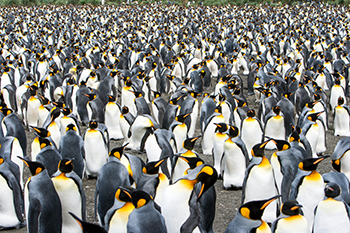
Underground aquifers — buried bodies of water — are home to many of these large subsurface communities of microbes. Together, these underground ecosystems are often called the deep biosphere (or living zone).
“The deep biosphere is a substantial part of life on Earth,” at least by mass, says Sean McMahon. He works at the University of Edinburgh in Scotland. As a geobiologist, he studies how living things and their environment interact. McMahon focuses on the deep biosphere.
“It’s a frontier of exploration we know very little about,” he says. And, he adds, it “is constantly turning up surprises.” Those include new types of microbes and new ways that microbes interact with minerals. With so little oxygen and so few nutrients down deep, life there tends to grow slowly. But that also means individuals can live a very long time.
(Actually, the very oldest microbes on Earth probably live in the deep biosphere beneath the ocean floor. Some may be thousands or even millions of years old, estimates Hans Roy of Aarhus University in Denmark.)
A bacterial cell is only about a tenth the size of most animal cells. Yet even though microbes are too small to see, they still have mass. And given the Earth’s enormous populations of microbes, that mass adds up. The biomass of bacteria is greater than all birds and mammals combined. That’s also true of each of the other microscopic kingdoms of life: archaea (Ar-KEE-uh) and protists. It’s even true of viruses.
“Dinosaurs never ruled the Earth — it was bacteria all along,” says McMahon.
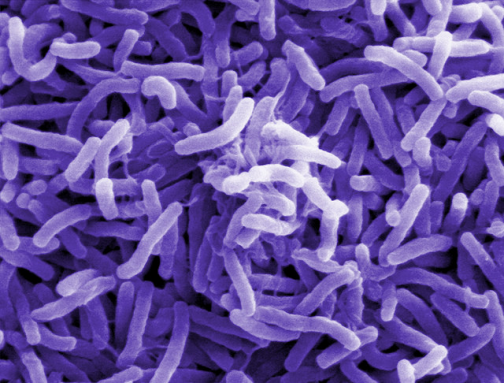
Naturally, such small organisms are hard to count. Most surveys only estimate their numbers. To calculate their biomass, researchers multiply the number of cells by the likely weight of each cell (based on its size).
But scientists’ ideas of an average cell size have been changing over the years, notes Barny Whitman. That makes things complicated. Whitman is a microbiologist at the University of Georgia, in Athens.
“In the late ‘90s, most estimates of cell size were about four or five times larger than they are now,” he says. “Since then, people have discovered large numbers of very small cells.” So biologists have had to adjust their biomass tallies to account for smaller bacteria.
This kind of uncertainty is an important part of any study. Science is rarely certain. Instead, researchers try to express how well they know something, or how much bigger or smaller a number might be. This uncertainty often reflects how hard it is to measure something. For example, scientists don’t know exactly how big microbes are, and many of them are hidden underground. Plants are easier to find and measure, so their biomass has less uncertainty.
Ultimately, Whitman argues, the overall results about Earth’s biomass are more important than the details. Even if scientists can’t be completely certain how many single-celled organisms there are, they still know bacteria vastly outweigh any animal.
Human interference
Here is a representation of the relative biomass of life by general types. For mammals (red ball), click to see the relative masses by subtypes (such as humans).
Graphic: L. Steenblik Hwang; Data: Y.M. Bar-On et al/PNAS 2018
Modern humans have only been around for some 300,000 years. That’s just a flash in geological history. Still, we’ve left our mark on the planet. We’ve changed Earth’s terrain and its chemistry. We’ve also affected the diversity, abundance and biomass of many other species.
For example, between 15,000 and 10,000 years ago, half of Earth’s large mammal species died out. (“Large” in this case means mammals weighing more than 45 kilograms, or 100 pounds.) Human activities, such as hunting or destroying habitats, seem to have largely driven that extinction. That’s what a 2014 study concluded, at least. The study was done by Christopher Sandom and his colleagues at Aarhus University in Denmark.
Milo and Bar-On now estimate that over humanity’s history, 90 percent of animal biomass has disappeared.
The plant kingdom has taken a similar hit. Its mass has declined by half since humans began roaming the planet. And the crops people are farming only make up 2 percent of greenery today. In other words, we haven’t fully replaced the plants that we cleared away to make room for farms and expanding cities.
With climate change, the total amount of plant life on Earth will continue to decrease, according to research by Tom Crowther. He’s an ecologist at ETH Zurich, a university in Switzerland. He has been studying how our planet’s plant life will change in the future.
Today, 43 percent of Earth’s trees grow in the tropics. That’s the warm region close to the equator. Its growing season lasts all year and largely explains why plants can grow more densely there than at higher latitudes. (Latitude measures how far a place is from the equator. Sites with high latitudes are nearer to the poles, like Siberia or northern Alaska.)
But human-caused climate change has been warming the high latitudes faster than the rest of the planet. That’s especially true in the Arctic. As a result, more plants can move in and grow there, Crowther says. So the world’s total amount of forested land will increase.
However, climate change and the cutting down of greenery at tropical sites have made some of those sites drier. “The trees don’t like that,” Crowther says. So even if more land is warm enough to support trees, he predicts that the total biomass of trees will fall. How much? Stay tuned. Crowther is working on some calculations right now. In any case, plants will likely still dominate life on Earth. But the living planet could look very different.
By 2050, Earth may host 9.7 billion people. Our human biomass by then still won’t outweigh bacteria. But the balance of animals and plants may continue to shift so that we’ll have even more livestock and crops and even less wildlife. This means Earth’s biodiversity — the variety of life — will shrink. And that can be bad for the health of habitats. If trends continue, there will be fewer life forms for you to write your pen pal about.
Biomass studies such as these are one way to project what the future may look like, and how quickly major changes in species or ecosystems may occur. They also help us understand the role people are playing in these changes. That could help us learn what organisms (big or small) most need protecting.







